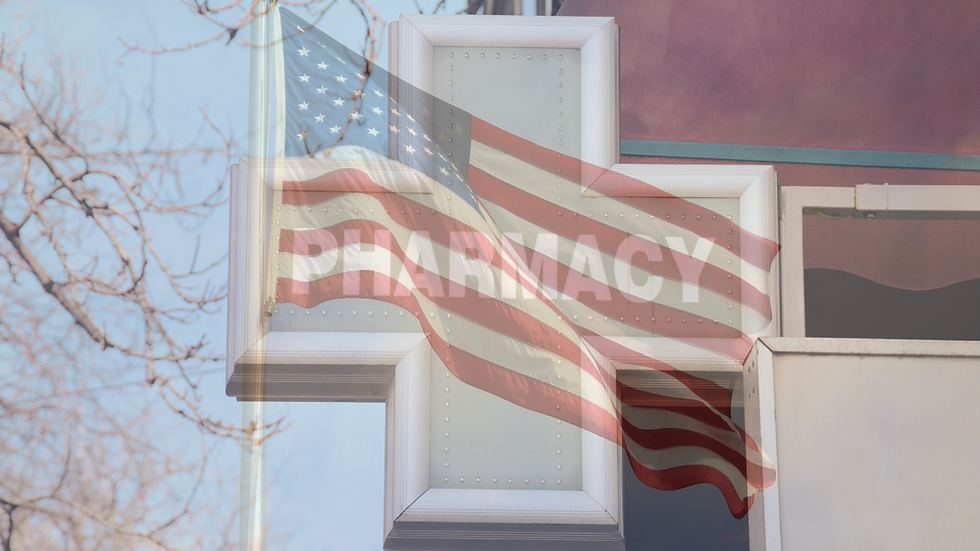It’s not just CVS. Other big pharmacy chains cut hours, close stores
- Sep 5, 2023
- 3 min read
Walmart is cutting hours at its busy pharmacies, while Rite Aid — which is already selling off stores — is expected to file for bankruptcy protection, news organizations have reported over the past week.
The news comes after inspectors have found that CVS’s understaffed stores in Ohio have in some instances lacked controls to protect patients. And it raises the prospect that after buying up independent and small-chain competitors, cost-cutting large chains might not be able to adequately protect patients — when they can provide service at all.
One Tuesday, Reuters reported that Walmart was trying to reduce costs by asking 16,000 pharmacists to work fewer hours. Earlier this year, the company reduced the hours at 4,500 of its 5,000 pharmacies by two a day, the story said.
Reasons cited for the need for cuts include the $3.1 billion Walmart has to pay to settle a national opioid lawsuit, a lack of pharmacy technicians, and losses from sales of a weight-loss drug, the story said.
Meanwhile, Rite Aid is reportedly planning to file for Chapter 11 bankruptcy protection — a move that would likely involve the company closing 400 of its roughly 2,000 stores, Yahoo News reported. It also cited mounting costs from opioid settlements as part of the reason.
Also bedeviling the companies might be difficulty competing with e-commerce retailers for front-of-store sales of items such as cosmetics and shampoo.
The outlet Digital Commerce 360 reports that online retailers sold more than $1 trillion worth of merchandise in 2022. And while its 8% growth that year was off from the 12% to 14% growth that typified the years from 2013 to 2019, it still was robust.
In 2021, CVS announced that it was closing 900 of its stores over the next three years, citing declining sales due to online competition as part of the reason.
The declines come after the big pharmacy chains in the 1990s and 2000s made a big bet that they could make money if they “sold everything, seemingly everywhere, at all hours,” as Slate put it last year.
But as the retail bet seems to be coming up lemons, it comes with a real cost to pharmacy patients.
For example, CVS bought and closed numerous smaller competitors and moved their prescriptions to its stores. Now it’s been closing its own stores and moving those scripts into its remaining stores, seemingly without adding staff to accommodate the new patients.
The Ohio Board of Pharmacy is proposing sweeping new rules after finding serious problems due to understaffing and high turnover. They include weeks-long waits for medicine, incorrectly filled prescriptions and a lack of controls over narcotics and other dangerous drugs.
In addition to those problems, the closure of smaller competitors — especially in rural areas — has made it much more difficult for some patients to get to the pharmacy, which for some is their only regular encounter with a medical professional. In other words, the closures have created pharmacy deserts.
In at least some cases, the problem isn’t that the companies owning big chains are losing money, it’s that they’re not making enough to keep Wall Street happy. For example, CVS Health made almost $2 billion in profit in the second quarter of this year, but that was 37% less than a year earlier, CNBC reported.
But the corporation owns not only the biggest pharmacy retailer. It also owns Aetna, a top-ten health insurer, and CVS Caremark, the nation’s largest drug middleman. And not all of the slump was due to pharmacy operations.
In the CVS’s second-quarter earnings call, CEO Karen Lynch said, “We grew (pharmacy) revenue to $28.8 billion, an increase of nearly 8% versus the prior year. We generated $1.4 billion of adjusted operating income in the quarter, a decrease of 17% from the prior year, largely due to lower COVID-related volumes.”
Meanwhile, Walmart didn’t break out revenue from its pharmacy operation. But overall net income for the second quarter was up 53% over a year earlier, at $7.89 billion.
So at least some of the big chains are slashing stores or staffing — or both — even though their owners are making billions.
As it proposed new patient protections, the Ohio Board of Pharmacy cited numerous surveys indicating that safety is much less of a concern at the independent pharmacies and small chains that the big chains have been pushing out of business.
One was a 2021 survey asking Ohio pharmacists whether they agreed with the statement, “I feel that the workload-to-staff ratio allows me to provide for patients in a safe manner.”
Almost 90% of those working for large chains responded that they didn’t have enough staff to keep patients safe. By contrast, almost three quarters of small-chain and independent pharmacists said they were adequately staffed to protect patients.
Reporter: MARTY SCHLADEN




Comments